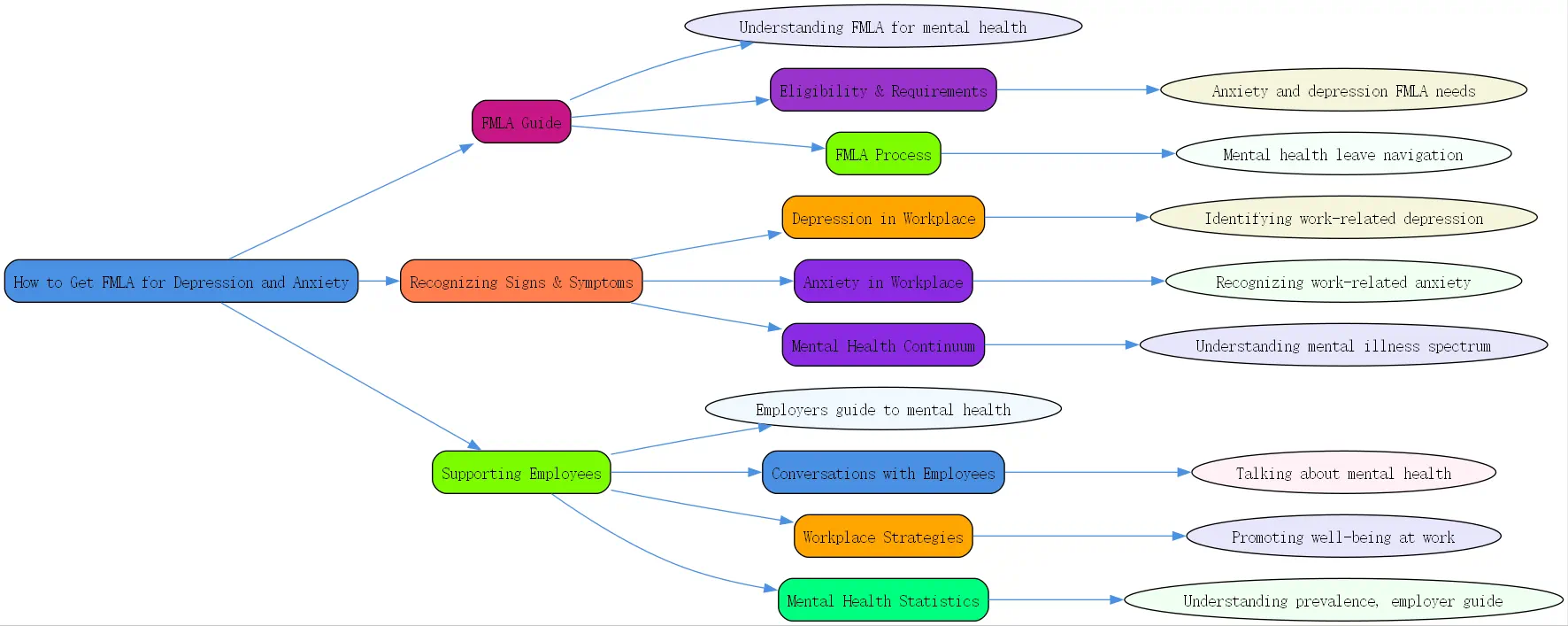How to Get FMLA for Depression and Anxiety: A Comprehensive Guide


Navigating through mental health challenges while maintaining professional responsibilities can be overwhelming. The Family and Medical Leave Act (FMLA) offers a structured way to take a leave from work for medical reasons, including mental health conditions like anxiety and depression. This guide by BrainTalking unpacks everything you need to know to properly manage and apply for FMLA, ensuring your mental well-being remains a priority.

Understanding FMLA and Mental Health Conditions
What is FMLA (Family and Medical Leave Act)? FMLA is a US federal law that entitles eligible employees of covered employers to take unpaid, job-protected leave for specified family and medical reasons. This includes managing serious health conditions, which can include mental health issues such as depression and anxiety.
Can you get FMLA for anxiety and depression? Absolutely. Depression and anxiety that interfere significantly with daily activities and work performance qualify under FMLA provided they meet certain criteria.
Qualifying mental health conditions for FMLA leave To qualify, the condition must involve ongoing treatment from a healthcare provider and cause more than just temporary discomfort. Chronic conditions that flare up intermittently, like depression and anxiety, are also covered under FMLA.

FMLA for Anxiety and Depression: Eligibility and Requirements
Employee eligibility criteria for FMLA Employees are eligible if they have worked for their employer for at least 12 months, have clocked in at least 1,250 hours over the past year, and work at a location where the company employs 50 or more employees within 75 miles.
Employer responsibilities under FMLA Employers must inform employees of their FMLA rights, maintain health benefits during leave, and restore the employee to the same or an equivalent job upon their return.
Required documentation for FMLA leave due to depression and anxiety To apply, employees need certification from a health care provider which includes dates of treatment, a medical diagnosis, and a statement that the employee is unable to perform work duties.
Navigating the FMLA Process for Mental Health
Step-by-step guide to applying for FMLA for depression and anxiety 1. Speak to your HR department about your intent. 2. Obtain and complete the necessary FMLA certification forms. 3. Submit required documentation and await approval. 4. Communicate regularly with your employer about your leave and expected return date.
Communicating with your employer about your mental health leave Open and honest communication is key. Explain as much as you are comfortable sharing about your situation to facilitate understanding and support from your employer.
What to do if your FMLA request is denied First, seek to understand the reason for the denial. It might be a need for more information or documentation. If the denial seems unjustified, consider seeking legal advice.
Recognizing Depression and Anxiety: Key Signs and Symptoms
Identifying Symptoms of Depression in the Workplace
- Persistent sadness and low mood: Feelings that last more than two weeks and affect daily functioning may be a sign of depression.
- Loss of interest in work and activities: A significant reduction in motivation and pleasure in all or most activities is a classic sign of depression.
- Changes in appetite or sleep patterns: Significant weight changes or disruption in sleep patterns, whether insomnia or excessive sleeping, are common in depression.
Recognizing Signs of Anxiety in the Workplace
- Excessive worry and fear: Constant worries about various activities or events, often irrational, indicate anxiety.
- Difficulty concentrating: People with anxiety may find it hard to focus on tasks at hand.
- Physical symptoms of anxiety: Rapid heartbeat, excessive sweating, or trembling can accompany anxiety in the workplace.
The Mental Health Continuum: Understanding Mental Illness
- Defining mental health vs. mental illness: Mental wellness or illness is a spectrum where everyone’s mental state can fluctuate based on various factors.
- Understanding the fluctuating nature of mental health: Factors like personal experiences or biological processes affect where one is on this continuum.
- Factors affecting mental health: Biology, access to support networks, financial stability, and external experiences can all influence one’s mental health state.
Supporting Employees with Depression and Anxiety: A Guide for Employers
Having Conversations About Mental Health with Employees
- Tips for initiating supportive conversations: Approach with empathy, ask open-ended questions and listen actively.
- Creating a safe and confidential environment: Ensure the conversation remains private and the employee feels secure discussing their health.
Workplace Strategies for Promoting Mental Well-being
- Implementing mental health awareness programs: Awareness raises understanding and reduces stigma.
- Reducing workplace stressors: Identify elements like excessive workloads and politics that may impact employees’ mental health.
- Promoting work-life balance: Encourage policies that allow flexible working hours and sufficient downtime.
Understanding Mental Health Statistics and Prevalence
- Prevalence of mental illness in Australia (one in five adults): Reflects the widespread nature of mental health challenges.
- Gender differences in mental illness rates (women vs. men): Women are statistically more likely to experience depression and anxiety.
- The importance of seeking professional help and addressing myths: Many fail to seek help due to misconceptions; understanding these can guide better responses and support.



